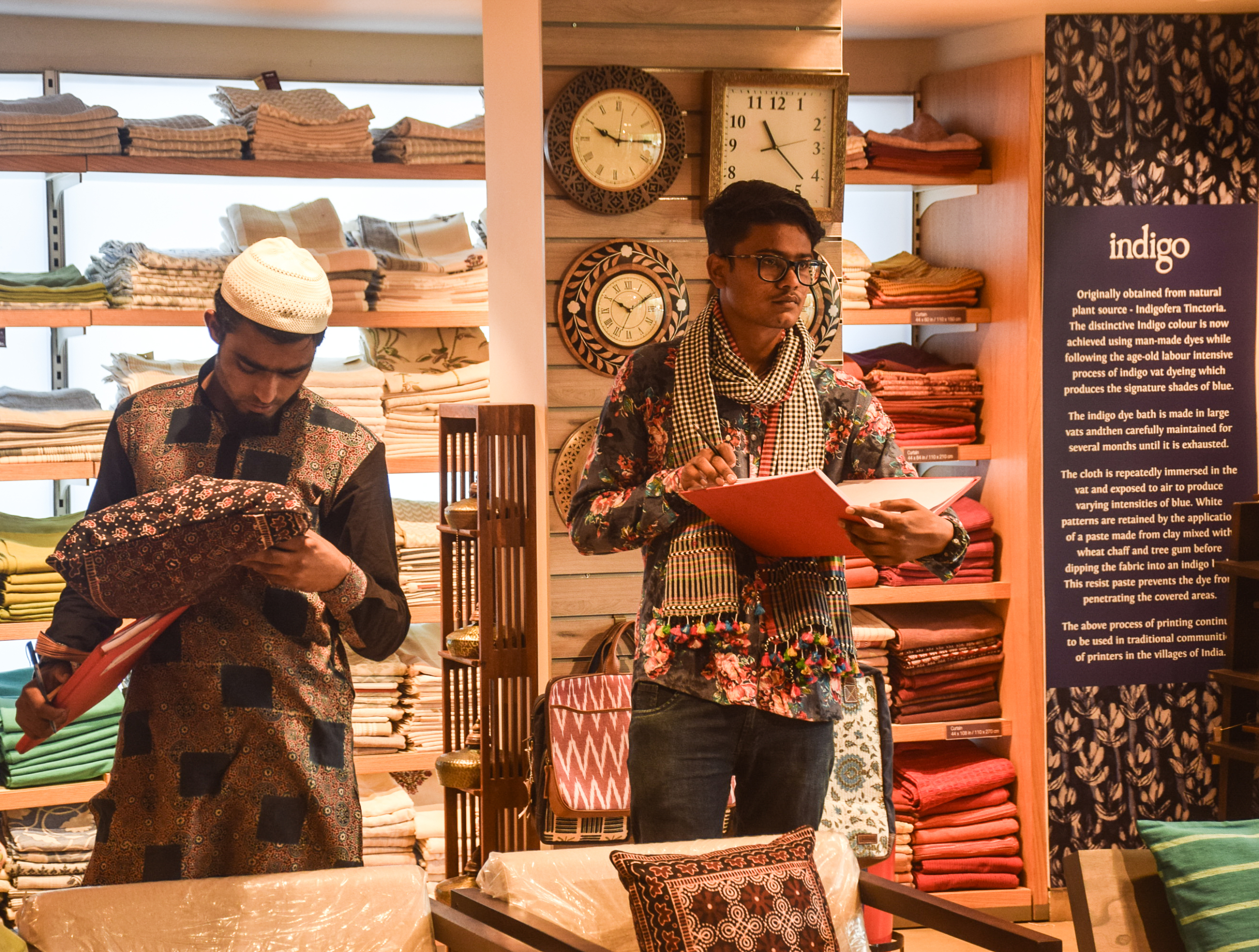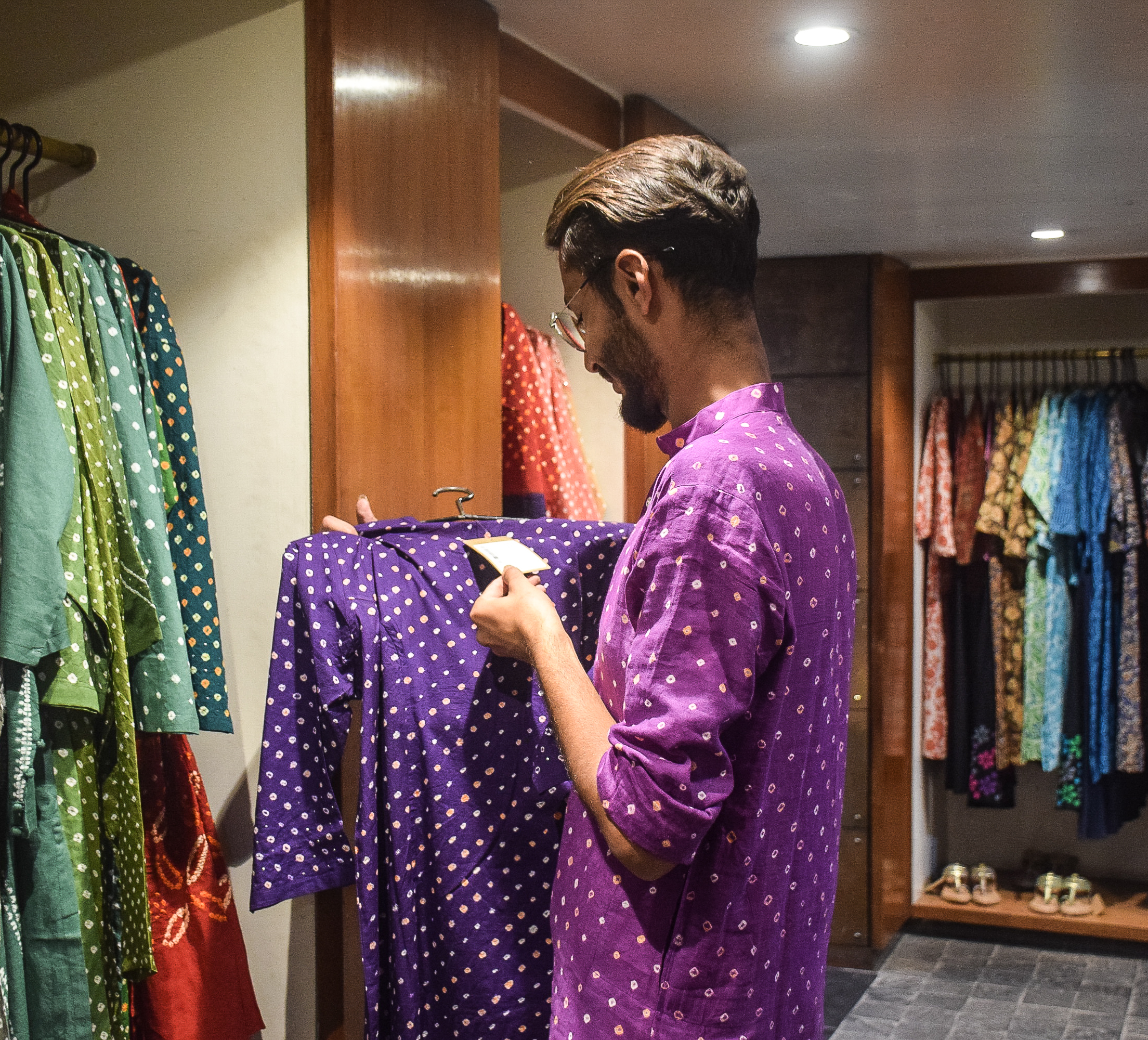Market Forces

 Today’s craft is created for urban markets. In many regions of India, artisans don’t have direct access to those markets. They are beholden to “Master Artisans” for whom they do job work and who lend them money they won’t repay in their lifetimes, preventing them from leaving their workshops.
Today’s craft is created for urban markets. In many regions of India, artisans don’t have direct access to those markets. They are beholden to “Master Artisans” for whom they do job work and who lend them money they won’t repay in their lifetimes, preventing them from leaving their workshops.
Enabling direct market access is a key focus of the design curriculum at SKV. In Market Orientation, the third module of the year-long course, artisan students explore market segments. Pictured, Amarbhai, a bandhani artisan student, and Shakilbhai, an Ajrakh print student and Kisanbhai, a weaver student study the presentation and pricing of hand-crafted products similar to those that they create, to gain an understanding of market segments and to conjecture about how their work can be valued. Students also visit homes in Ahmedabad to learn more about people who might purchase their work- contemporary end users. Through the year, they learn to make theme-based, market-oriented collections and work very hard to create unique new looks, which they launch in a show in Ahmedabad.
Yet, after the course when it’s time to go to an exhibition in Delhi, Mumbai, etc., the collection is left behind and “regular” work is brought. “This is what the market wants,” they say. The markets to which they have direct access are pop-up exhibitions and medium level businesses. This segment- like the original local clients- wants what it already knows.
For artisans, the urban market remains distant. In the local ecosystem men deemed even the little unknown of hereditary clients risky. Add the perceived practicalities of business and the push to scale up, and the risks pre-empt innovation.
Degrees of unknown can be managed by experience. As artisan designers gain experience and make the market more familiar, they can begin to utilize creativity to gain recognition as well as increased income.
But the process is slow. And we live in a fast world governed by marketing. Hard sell marketing leaves little space for exploration and can make us buy what we don’t really want before we realize it. Marketing can become a runaway train when it eclipses what is marketed. And marketers of craft often omit names and faces of artisans, reinforcing the idea of hands without heads –or curiosities needing help, like the example from the G20 bazaar.
So, the question is how to leverage creative capacity honestly to negotiate value in higher levels of the market?
Photos by LOkesh Ghai, who taught the course in 2020



